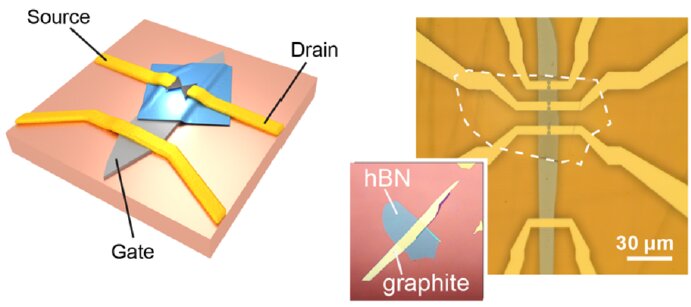
Researchers at Delft University of Technology (TU Delft) have presented the first mechanically tunable monolayer graphene Quantum Dot (QD) whose electronic properties can be modified by in-plane nanometer displacements.
Precisely manipulating individual charge carriers is a cornerstone for single-electron transistors and for solid-state qubits.
In order to access both the electrical and mechanical information from the sample, the researchers used a platform called the mechanically controlled break junction to measure the electromechanical properties of their device during three-point bending. The sample consists of a van der Waals heterostructure made by stacking several 2-D material flakes on top of a flexible substrate: a graphite back gate to electrostatically control the current through the device, a hexagonal boron nitride dielectric layer and a monolayer graphene conducting channel.
The results of the room-temperature measurements during bending demonstrate that the graphene, patterned into a nanobowtie shape with a constriction width of 160 nm, eventually breaks (zero current) but can also be remade (microampere currents) due to sliding and overlapping of the graphene edges. (Phys.org)
The paper has been published in Nano Letters.
